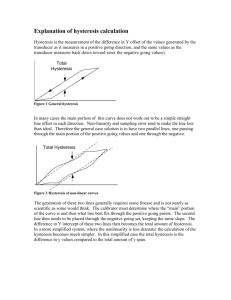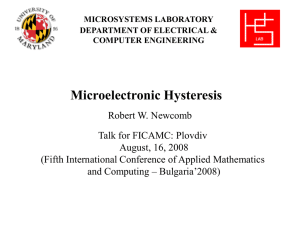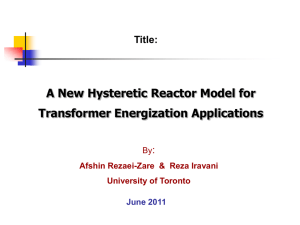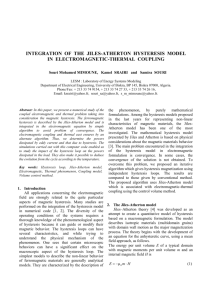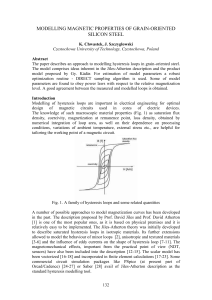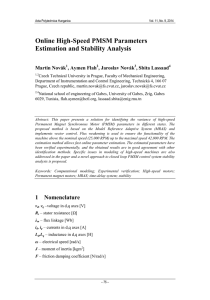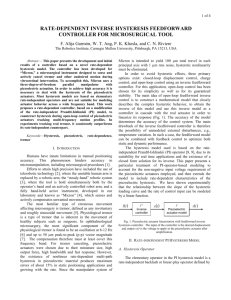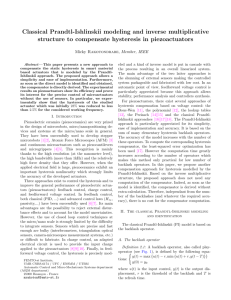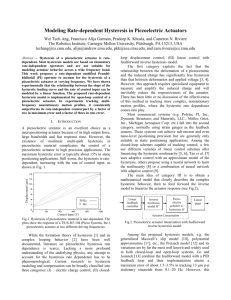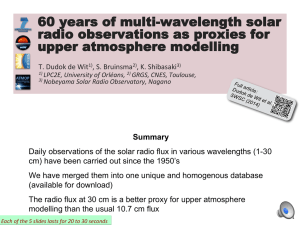(PMSM) Hysteresis loop
advertisement
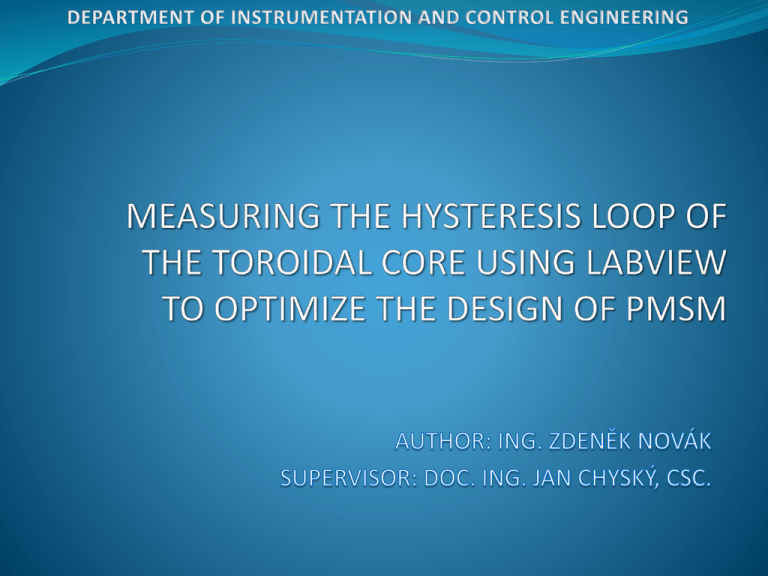
Presentation overview Why to measure hysteresis loop Design of hysteresis measurement Analyzing acquired data Application of analyzed data Verification of FEMM analysis Conclusion PMSM Goal: 250 000 rpm Power output: 5kW Why to measure hysteresis loop Flux Density [T] Magnetic flux intensity [A/m] In Opposite Direction Magnetic flux intensity [A/m] Flux Density [T] In Opposite Direction Permanent magnet synchronous motor (PMSM) WHY TO DO IT Hysteresis loop Design of hysteresis measurement H (t ) N 1 i1 ( t ) 2 r Measuring procedure B (t ) B 0 v 2 (t ) HOW TO DO IT 1 RC t 1 SN u 2 ( ) d 2 0 t u 0 2 ( ) d Toroidal core with winding Workplace Design of hysteresis measurement Variables XY Graph DAQ Assistant Program block diagram HOW TO DO IT Writing to Measurement File Design of hysteresis measurement GUI from LabVIEW HOW TO DO IT Analyzing acquired data Hysteresis loop of the toroidal shape core; applied current 3 A, applied frequency 250 Hz HOW TO DO IT Application of analyzed data Implementation into FEMM software FOR WHAT USE IT Application of analyzed data Results of the FEMM analysis FOR WHAT USE IT Verification of FEMM analysis For current 4A: Torque of PMSM in FEMM = 0.01... [N.m] Torque of real PMSM= 0.01... [N.m] PMSM prototype FOR WHAT USE IT Activating PMSM Video na internetu Conclusion Data for B-H curve of the proposed material were acquired and analyzed B-H characteristic was implemented into FEMM software and some parameters were verified Next steps Optimization of PMSM based on FEMM model Verification of FEMM model Considering the possibility of using other materials and design SUMMARY Thank you ! Děkuji ! Dziękuję ! 감사합니다! Q&A
